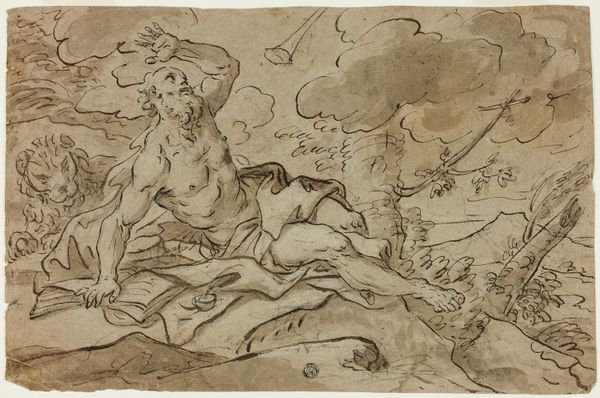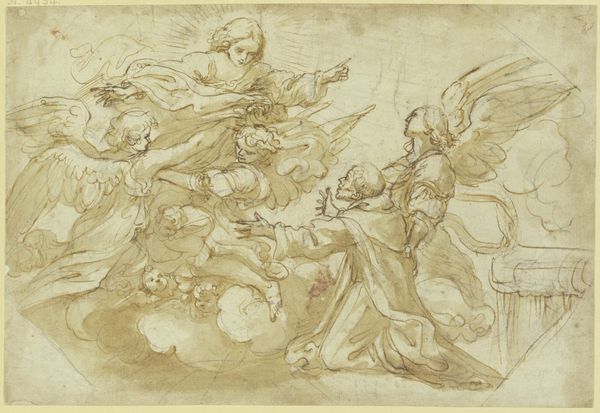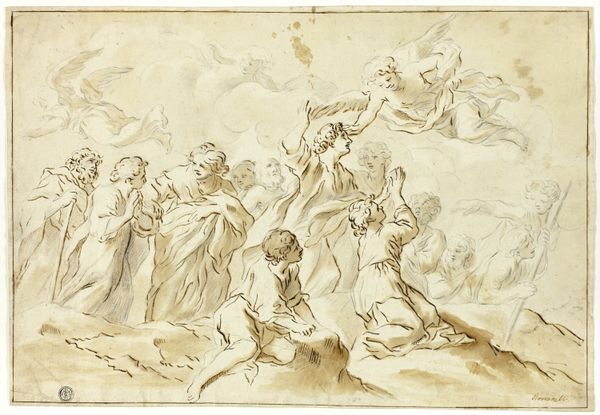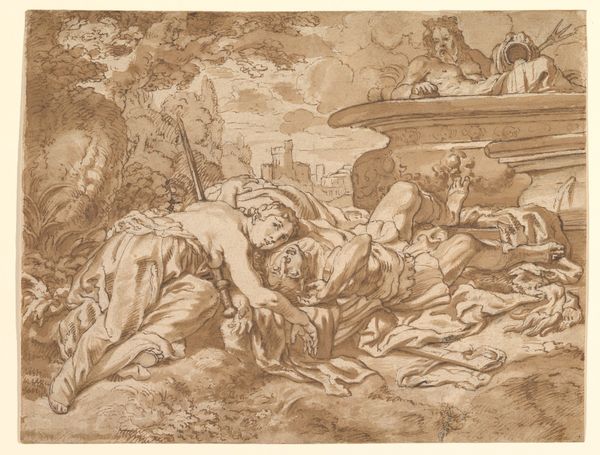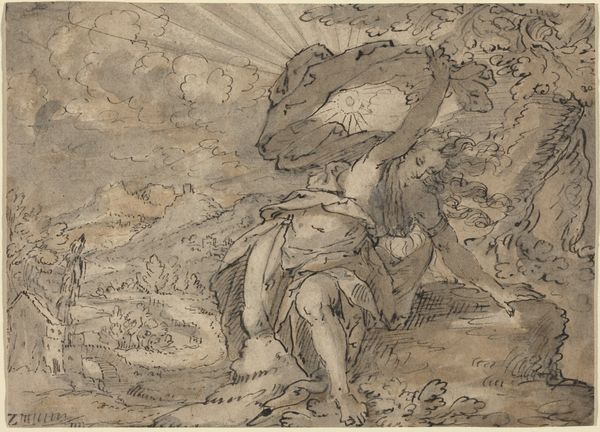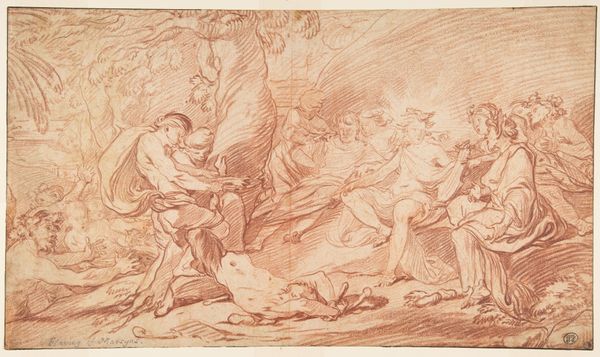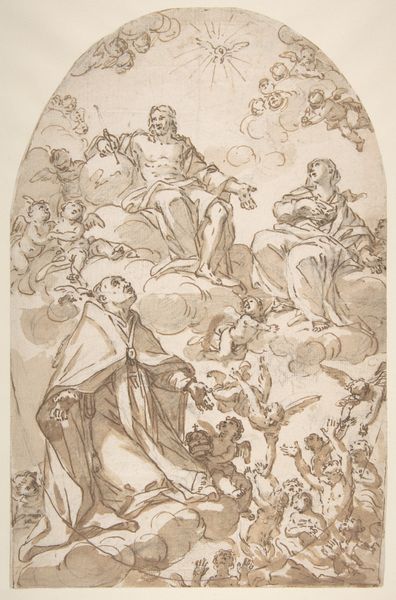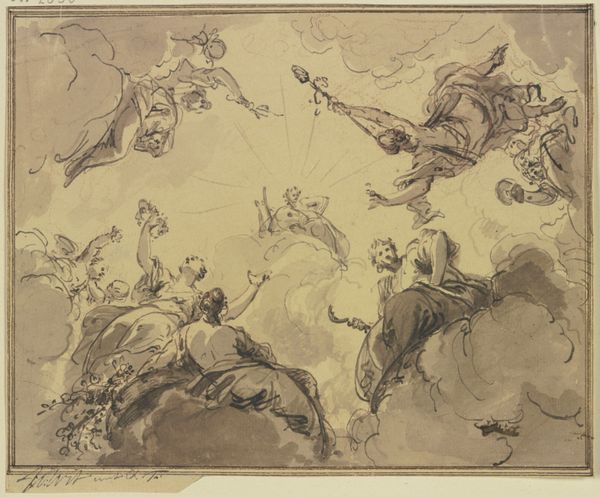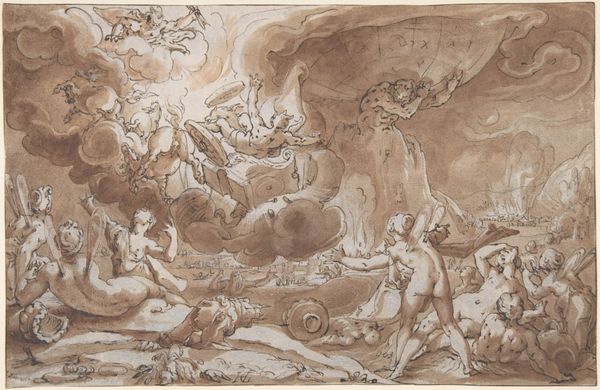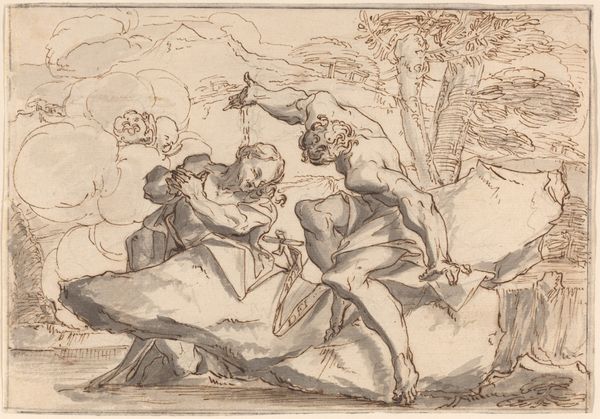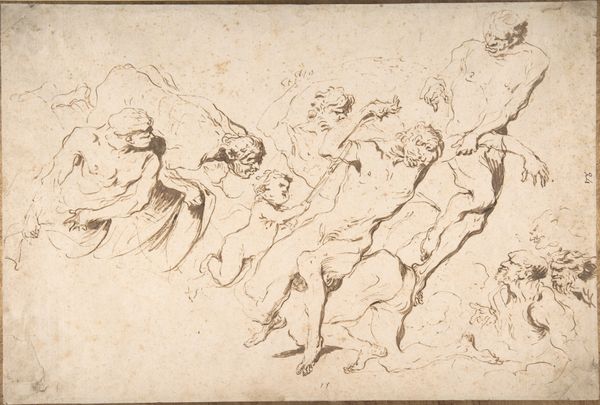
drawing, ink, pen
#
drawing
#
baroque
#
ink painting
#
pencil sketch
#
figuration
#
ink
#
pen
#
history-painting
Dimensions: 6 5/8 x 11 3/16 in. (16.83 x 28.42 cm) (sheet)7 5/16 x 13 11/16 in. (18.57 x 34.77 cm) (mount)
Copyright: Public Domain
Editor: We’re looking at Domenico Piola's "Agony in the Garden," a 17th-century drawing rendered in pen and ink. It depicts a well known scene in a rather classical composition. What really strikes me is how the artist uses very limited material to convey such a monumental spiritual crisis. How can we look at it through a material lens? Curator: The medium itself speaks volumes, doesn't it? Ink, often associated with writing and documentation, is used here to depict a scene of intense emotional and spiritual labor. Think about the cost of the ink and paper itself at this time; not exactly disposable commodities. What do the swift, economical lines tell us about the value placed on preparatory sketches versus a more polished, "finished" piece? Editor: That’s a good point! I hadn’t considered the economics of it. I guess it reflects a period of transition in artwork conception. It definitely begs the question – how would the artist’s workshop or the commissioning patron have approached a sketch like this in contrast to a fully realized painting? Curator: Exactly. The very *act* of drawing, the physical labor of it, highlights a key tension of the Baroque era. On one hand, the church often functioned as the main art consumer. But artists had to make ends meet too and faced economical constraints. We see divine subject matter created using relatively humble, reproducible materials. Do you think this potentially democratizes access to religious imagery, even if unintentionally? Editor: Hmmm, it’s hard to say it would have really “democratized” the art consumption at the time… but it maybe speaks to a shift of considering drawings or sketches valuable cultural objects for artistic purposes, regardless of religion? I will look at sketches very differently moving forward. Curator: Perhaps! Seeing it as both devotional and product is helpful, isn’t it? Now, what does the angel carrying the chalice, or Christ praying atop of rocky terrain reveal in relation to their labor conditions? There is definitely so much to learn.
Comments
No comments
Be the first to comment and join the conversation on the ultimate creative platform.

